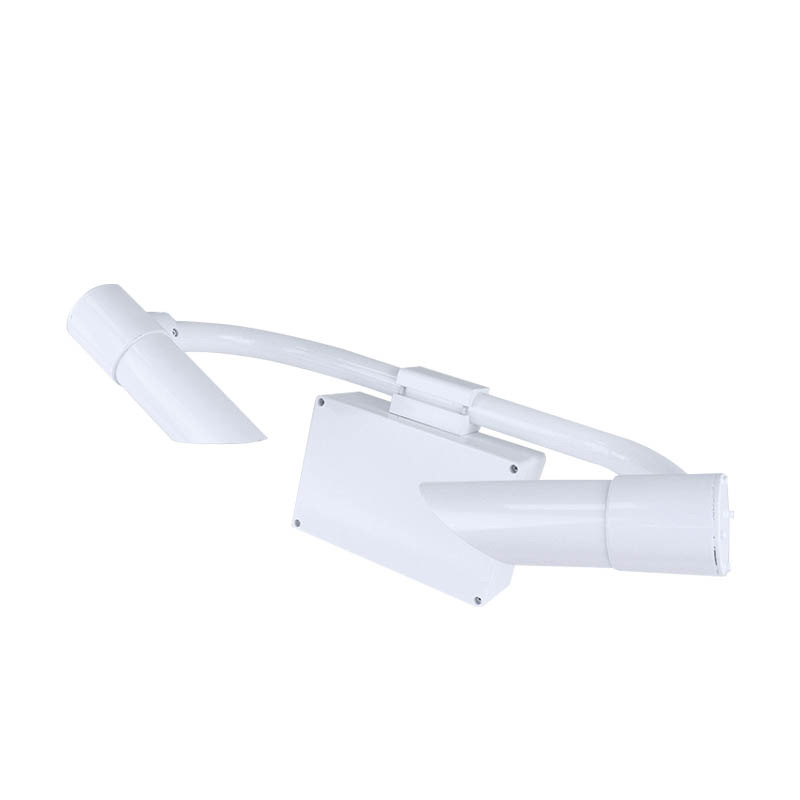Shandong Fengtu IOT Technology Co., Ltd
Sales Manager:Ms. Emily Wang
Cel,Whatsapp,Wechat:+86 15898932201
Email:info@fengtutec.com
Add:No. 155 Optoelectronic Industry Accelerator, Gaoxin District, Weifang, Shandong, China

Sales Manager:Ms. Emily Wang
Cel,Whatsapp,Wechat:+86 15898932201
Email:info@fengtutec.com
Add:No. 155 Optoelectronic Industry Accelerator, Gaoxin District, Weifang, Shandong, China

Model:FT-N20
Brand:fengtu
1. Road Weather Sensors Product Introduction
N20 Road Weather Sensors use the forward scattering method to measure the total extinction coefficient of the air and then calculate the current visibility. They are widely used in road transportation, meteorology and other industries.
2. Technical features of Road Weather Sensors
1. The instrument shell is made of high-quality aluminum material, which is spray-painted after anodizing. The whole machine has excellent waterproof, dustproof and anti-collision properties;
2. The transmitting and receiving lenses of the instrument are designed downward, which greatly reduces interference from stray light such as sunlight;
3. Weather phenomenon recognition, which can identify fog, rain, snow, mixed precipitation, sunny and other weather phenomena, with a high recognition rate;
4. Built-in watchdog circuit to ensure reliable and stable outdoor operation for a long time;
5. The instrument communication and power interfaces all include lightning protection designs, which greatly reduce lightning strikes and static electricity damage;
6.12~24V wide voltage power supply, total power is about 1W, very low power consumption, and can be powered by solar panels, batteries, etc. for a long time;
7. The digital interface uses RS485 or RS232, standard MODBUS protocol, no protocol adaptation is required;
8. The instrument can output 15s, 1min, and 10min visibility values, which can be read directly without configuration, making it more flexible to use.
3. Road Weather Sensors implementation standards
QX/T 536-2020 Forward scattering visibility meter test method
4. Technical indicators of Road Weather Sensors
| Main parameters | Parameter range | resolution | error |
| Measuring range | 20km | 1m | ≤2km ±2%2km~10km ±5%>10km ±10% |
| Repeatability | ≤4% | ||
| weather phenomena | Fog, rain, snow, mixed precipitation, sunny | ||
| Weather phenomenon recognition rate | ≥95% | ||
| working temperature | -40~60℃ | ||
| Working humidity | 0~100%RH | ||
| Working power supply | 12~24V | ||
| Power consumption | 1W | ||
| size | 610x230x360mm (length x width x height) | ||
| weight | ≤10kg | ||
5. Road Weather Sensors installation instructions
1. Installation location
The installation location of the visibility meter needs to be on an open, flat, unobstructed ground, away from buildings, trees, shrubs, peaks and other objects. This ensures that the instrument's observation range is not blocked and the data is more accurate.
Unnecessary optical interference should be avoided. The receiver of the visibility meter should be installed facing away from a strong light source (such as sunlight), and the transmitter and receiver should be located in the north-south direction.
2. Installation height
The installation height of the visibility meter should be greater than 1.5m and less than 3m. If the installation height exceeds 3m, the corresponding height should be calibrated.
3. Installation steps
3.1 Before installation, the user should prepare the upright column and install it on the upright column using the clamp provided with the instrument.
3.2 Lift the instrument to a suitable position and use the bolts behind the clamp to install and fix the visibility meter. During installation, ensure that the openings of the receiver and transmitter are facing downwards, otherwise they should be reinstalled.
Waterway visibility detection is a crucial aspect of ensuring water transportation safety. On river waterways, especially in mountainous river sections, abundant water vapor conditions easily form heavy fog, posing serious threats to ship navigation. During poor visibility conditions, ports are ofte...
In maritime navigation, poor visibility is an "invisible killer" threatening ship safety. When weather conditions such as dense fog, heavy rain, or sand and dust occur, the visibility distance shortens sharply. Ships not only struggle to observe nearby landmarks, with positioning accuracy...
Both the piezoelectric rain gauge and the Stainless Steel Tipping Bucket Rain Gauge are commonly used tools for measuring rainfall data. So, which of these two products is better? How should consumers choose between them? Next, the editor will provide a detailed comparison of the differences between...
As an important part of the modern transportation network, the internal environment of a tunnel is closely related to visibility. Tunnels are relatively enclosed, with insufficient natural light. Pollutants such as vehicle exhaust and dust are likely to accumulate, creating an environment with high...